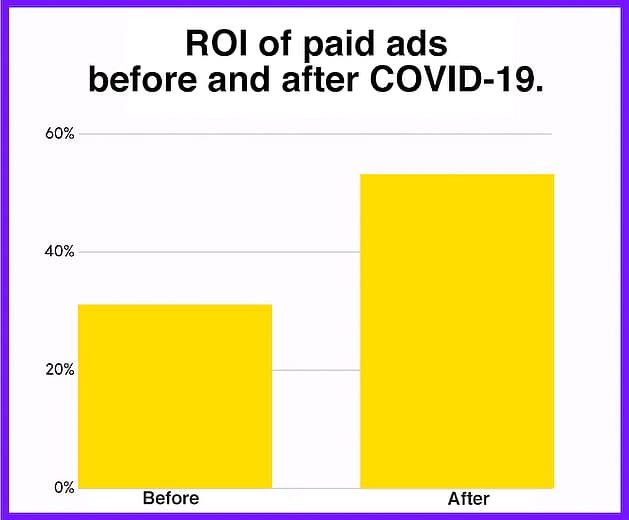3 ways to pivot your marketing strategy for COVID-19.
Introduction.
The pandemic isn’t going anywhere anytime soon, and we’re all busy adjusting to the new norm. But it’s tough. As we’re all aware, business can’t just stop. At the same time, we can’t just carry on as usual. Instead, we all must pivot.
Marketing is one aspect of every businesses which has been significantly affected by Coronavirus. As you might have seen in our post How COVID-19 has affected your marketing, the virus has been incredibly disruptive. Since the outbreak, we’ve seen lots of new initiatives from companies who’re trying to build something positive from a negative situation.
So, what can be done – with at least another 3 weeks in lockdown ahead – to pivot your marketing strategy and offer some help to your clients, customers or prospects?
1. Education-based training.
With unemployment rates on the rise and no sign of an easy way out of this, more and more people are looking for opportunities to learn new skills and pursue new avenues.
Many people are looking for ways to pick up skills in fields they wouldn’t previously have been able to, like emerging tech.
If you’re looking for a good marketing opportunity, you should think about offering some educational-based courses or a video series, like webinars.
People can learn a lot from taking online courses. It’s a far quicker and less expensive way of upskilling than going back to school – you can also learn more applicable skills for the professional environment.
This is a great time for you to start offering courses around your expertise. It will boost your brand awareness and position you as a thought leader in your industry, all while offering genuinely helpful resources when people need it most.
You can host weekly webinars, offer longer downloadable resources or 1v1 sessions with your prospects and customers. You can also use sites like Udemy or create your own microsite to sell your own courses. The HubSpot Academy is a perfect example of what a great online resource hub can look like.
2. Ads and conversions.
Ads
The virus has meant that we’re all spending a lot more time online. As you saw in our previous post on COVID-19 marketing shifts, paid ads are becoming much cheaper. It’s intuitive when thinking about digital ads as an auction system. They need a lot of businesses to drive up the price (CPC) for ads so the larger companies have to spend more money.
If there’s a shortage of smaller businesses advertising, there won’t be as much competition for the product (ad space), so the CPC decreases.
On the other hand, we’re also experiencing a continued downturn in conversion rates – though not across all industries. The decrease in conversion rates does not match the decrease in CPCs. So while conversions are down, ads are far cheaper meaning you could offset lower conversion rates by increasing the number of clicks.
This presents an opportunity for digital ads to generate higher returns on your investment due to the current climate.

If you don’t run any digital ads, you should definitely be considering it right now. If you are running ads, consider ramping them up to make the most of the potential out there at the moment.
Conversions
Since the pandemic was announced, the decline in conversion rates has continued and businesses in almost every sector are experiencing lower conversions.
For some industries like Media, conversions are up. For others, like Travel and Tourism, conversion rates are at an all time low and major companies risk going under due to the disruption caused by COVID-19.
So, with CPCs down and conversions also down the question becomes: how can we boost conversions in this environment?
There are solutions out there. For example, retailers who offer flexible payment services like Klarna and Affirm are benefiting from the surge in traffic and are boosting conversions because their customers are looking for ways to reduce their spending.
If you’re a B2B firm, you can apply something similar to reduce the financial strain on customers. Try extending your payment plays and communicating this with customers and prospects to improve conversions.
If you are selling some educational-based training, you should certainly consider offering a payment plan to your customers to ease their short-term financial burden.
Flexible payment options are an easy way to boost conversions in a time where most people are looking to reduce their spending.
3. Geographical diversification.
COVID-19 is a global pandemic, but it’s affecting some countries differently to others.
The virus has affected internet traffic drastically, and in that aspect alone, affects your entire marketing strategy.
So, could you open up your services to other regions and become less reliant on one economy? Through increasing your international SEO efforts, you will be able to increase web traffic in locations you wouldn’t normally target, like parts of South America.
If you’re offering educational resources, tailoring them to specific geographies is going the extra mile. If you’re expanding your service to new territories, there’s more work involved initially, but a short-term pivot to increase demand could lead to a profitable long-term strategy.
Conclusion.
Unfortunately the next few months are going to be difficult, perhaps even more so than they have been already. The best thing we can all do is stay inside and stay positive.
But businesses must find a way to push on and not only survive, but thrive through this crisis.
You have more time to explore what digital advertising can do for your business, so why not give it some extra thought?


